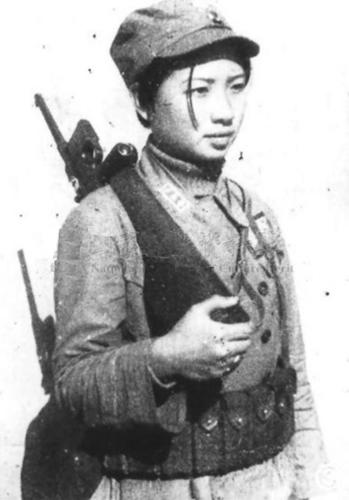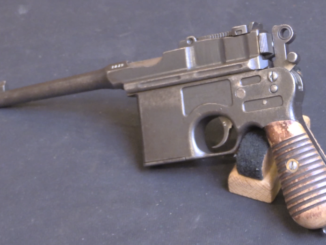
Chinese guerrilla fighter, circa 1939. Today, she’d be an Olympic gymnast.

Chinese guerrilla fighter, circa 1939. Today, she’d be an Olympic gymnast.



© 2026 Forgotten Weapons.
Site developed by Cardinal Acres Web Development.

“Right shoulder, ARMS” with a C96! Great photo and a good reminder on how popular/important the C96 and its derivatives and copies were in China during the 1930s. Thanks for posting this interesting picture.
Judging from the relative dimensions of the ammunition pouches on her belt as well as the number thereof, it appears that the C96 was her primary weapon and not merely a sidearm.
If i recall correctly, chinese guerrilla had “close quarter” troopers armed with pistols and dadao.
Earl, you’re right: back then, the C96 was commonly used by Chinese soldiers as a primary weapon instead of a rifle.
Exactly that was the thought back in 1896.
Remember that Dr. Ruth was a sniper for the Haganah. Different times and all that.
Can’t tell if she was communist or republican. Or maybe it didn’t matter at the time.
I wonder if she survived the war, or how it ended for her.
I sincerely hope that she survived the war and its aftermath intact in mind, spirit and body. Many Japanese Army units serving in China, especially those with politically-driven agendas ( such as the Imperial Guards ) were well-known for their unspeakable brutality in the name of honor, which perversely denigrated that very code of honor itself.
She is a Nationalist.
With the weapon shortage, no one was issued with two guns.
Junior officers and specialists were issued C96.
During the parade, some female were armed with C96 because they are smaller and lighter then rifles.
I think she could also belong to some Communist unit; her headgear (of the caractheristic German/Austrian ski cap style, introduced in the 1930s and which eventually replaced the traditional peaked cap) seems to lack the cap badge on the front, bearing a white or silver sun burst on a dark blue disc, the insignia of the Kuomintang. The thing over the cap peak is just a button holding the two ear flaps.
Excellent observation, Ruy — the lack of the characteristic Kuomintang star is quite telling.
It’s pretty much impossible to tell whether she’s a member of the National Army, or Communist forces. The cap is of the Nationalist style, but where you’d normally see a badge with two buttons below, she seems to have some large badge where the buttons would normally be. The three-star badge on her jacket collar suggests it started out as part of a National Army uniform.
It is important to remember though, that Communist units, like Eighth Route Army for example, fought alongside Nationalist forces, nominally within the National Army command structure, and there was a *lot* of use of National Army equipment and uniforms in Communist units. There are plenty of photographs of senior Communist commanders like Lin Biao and Zhu De in National Army uniforms.